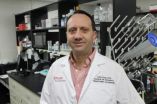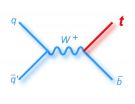(Press-News.org) When acupuncture first became popular in the western hemisphere it had its doubters. It still does. But over time, through detailed observation, scientists have produced real evidence that ancient Chinese practitioners of the medical arts were onto something.
Now new research documents a direct connection between the use of acupuncture and physical processes that could alleviate sepsis, a condition that often develops in hospital intensive care units, springs from infection and inflammation, and takes an estimated 250,000 lives in the United States every year.
"Sepsis is the major cause of death in the hospital," says Luis Ulloa, an immunologist at Rutgers New Jersey Medical School who led the study, which has been published by the journal Nature Medicine. "But in many cases patients don't die because of the infection. They die because of the inflammatory disorder they develop after the infection. So we hoped to study how to control the inflammatory disorder."
The researchers already knew that stimulation of one of the body's major nerves, the vagus nerve, triggers processes in the body that reduce inflammation, so they set out to see whether a form of acupuncture that sends a small electric current through that and other nerves could reduce inflammation and organ injury in septic mice. Ulloa explains that increasing the current magnifies the effect of needle placement, and notes that electrification is already FDA-approved for treating pain in human patients.
When the electroacupuncture was applied to mice with sepsis, molecules called cytokines that help limit inflammation were stimulated as predicted, and half of those mice survived for at least a week. There was zero survival among mice that did not receive acupuncture.
Ulloa and his team then probed further, to figure out exactly why the acupuncture treatments had succeeded. And they made a discovery that, on its face, was very disappointing. They found that when they removed adrenal glands – which produce hormones in the body – the electroacpuncture stopped working. That discovery, on its face, presented a big roadblock to use of acupuncture for sepsis in humans, because most human cases of sepsis include sharply reduced adrenal function. In theory, electroacupuncture might still help a minority of patients whose adrenal glands work well, but not many others.
So the researchers dug even deeper – to find the specific anatomical changes that occurred when electroacupuncture was performed with functioning adrenal glands. Those changes included increased levels of dopamine, a substance that has important functions within the immune system. But they found that adding dopamine by itself did not curb the inflammation. They then substituted a drug called fenoldopam that mimics some of dopamine's most positive effects, and even without acupuncture they succeeded in reducing sepsis-related deaths by 40 percent.
Ulloa considers the results a double triumph.
On the one hand, he says, this research shows physical evidence of acupuncture's value beyond any that has been demonstrated before. His results show potential benefits, he adds, not just for sepsis, but treating other inflammatory diseases such as rheumatoid arthritis, osteoarthritis and Crohn's disease.
On the other hand, by also establishing that a drug reduced sepsis deaths in mice, he has provided an innovative roadmap toward developing potential drugs for people. That roadmap may be crucial, because no FDA-approved drug to treat sepsis now exists.
"I don't even know whether in the future the best solution for sepsis will be electroacupuncture or some medicine that will mimic electroacupuncture," Ulloa concludes. The bottom line, he says, is that this research has opened the door to both.
INFORMATION:
Funding sources included the National Institutes of Health (grant RO1-GM084125) and the Mexican National Council for Science and Technology.
Acupuncture holds promise for treating inflammatory disease
Rutgers-led study suggests pathways to alleviating inflammation in disorders such as sepsis, arthritis
2014-02-24
ELSE PRESS RELEASES FROM THIS DATE:
New study shows a genetic link between feeding behavior and animal dispersal
2014-02-24
New research from the University of Toronto Scarborough shows that animal dispersal is influenced by a gene associated with feeding and food search behaviours.
The study, which was carried out by UTSC Professor Mark Fitzpatrick and PhD student Allan Edelsparre, provides one of the first aimed at gaining a functional understanding of how genes can influence dispersal tendencies in nature.
Using common fruit flies (Drosophila melanogaster), the researchers observed how two different foraging types – known as sitter flies and rover flies – moved over large distances ...
Ecotourism reduces poverty near protected parks, Georgia State University research shows
2014-02-24
ATLANTA--Protected natural areas in Costa Rica reduced poverty by 16 percent in neighboring communities, mainly by encouraging ecotourism, according to new research published today in the Proceedings of the National Academy of Sciences.
Although earlier studies indicated that establishing protected areas in poor regions can lead to reductions in poverty, there was no clear understanding why or how it happens.
"Our goal was to show exactly how environmental protection can reduce poverty in poorer nations rather than exacerbate it, as many people fear," says co-author ...
AGU: Uncovering the secret world of the Plastisphere
2014-02-24
HONOLULU – Scientists are revealing how microbes living on floating pieces of plastic marine debris affect the ocean ecosystem, and the potential harm they pose to invertebrates, humans and other animals. New research being presented here today delves deeper into the largely unexplored world of the "Plastisphere" – an ecological community of microbial organisms living on ocean plastic that was first discovered last year.
When scientists initially studied the Plastisphere, they found that at least 1,000 different types of microbes thrive on these tiny plastic islands, ...
Pinwheel 'living' crystals and the origin of life
2014-02-24
ANN ARBOR—Simply making nanoparticles spin coaxes them to arrange themselves into what University of Michigan researchers call 'living rotating crystals' that could serve as a nanopump. They may also, incidentally, shed light on the origin of life itself.
The researchers refer to the crystals as 'living' because they, in a sense, take on a life of their own from very simple rules.
Sharon Glotzer, the Stuart W. Churchill Collegiate Professor of Chemical Engineering, and her team found that when they spun individual nanoparticles in a simulation—some clockwise and some ...
New study supports body shape index as predictor of mortality
2014-02-24
In 2012, Dr. Nir Krakauer, an assistant professor of civil engineering in CCNY's Grove School of Engineering, and his father, Dr. Jesse Krakauer, MD, developed a new method to quantify the risk specifically associated with abdominal obesity.
A follow-up study, published February 20 by the online journal PLOS ONE, supports their contention that the technique, known as A Body Shape Index (ABSI), is a more effective predictor of mortality than Body Mass Index (BMI), the most common measure used to define obesity.
The team analyzed data for 7,011 adults, 18+, who participated ...
Volcanoes, including Mount Hood in the US, can quickly become active
2014-02-24
New research results suggest that magma sitting 4-5 kilometers beneath the surface of Oregon's Mount Hood has been stored in near-solid conditions for thousands of years.
The time it takes to liquefy and potentially erupt, however, is surprisingly short--perhaps as little as a couple of months.
The key to an eruption, geoscientists say, is to elevate the temperature of the rock to more than 750 degrees Celsius, which can happen when hot magma from deep within the Earth's crust rises to the surface.
It was the mixing of hot liquid lava with cooler solid magma that ...
Geosphere covers Mexico, the Colorado Plateau, Russia, and offshore New Jersey
2014-02-24
Boulder, Colo., USA – New Geosphere postings cover using traditional geochemistry with novel micro-analytical techniques to understand the western Trans-Mexican Volcanic Belt; an investigation of mafic rock samples from a volcanic field near Yampa, Colorado, travertine deposits in the southeastern Colorado Plateau of New Mexico and Arizona; a study "Slushball Earth" rocks from Karelia, Russia, using field and micro-analytical techniques; and an addition to the "The History and Impact of Sea-level Change Offshore New Jersey" special issue.
Abstracts for these and other ...
Building artificial cells will be a noisy business
2014-02-24
Engineers like to make things that work. And if one wants to make something work using nanoscale components—the size of proteins, antibodies, and viruses—mimicking the behavior of cells is a good place to start since cells carry an enormous amount of information in a very tiny packet. As Erik Winfree, professor of computer science, computation and neutral systems, and bioengineering, explains, "I tend to think of cells as really small robots. Biology has programmed natural cells, but now engineers are starting to think about how we can program artificial cells. We want ...
Study evaluates role of infliximab in treating Kawasaki disease
2014-02-24
Kawasaki Disease (KD) is a severe childhood disease that many parents, even some doctors, mistake for an inconsequential viral infection. If not diagnosed or treated in time, it can lead to irreversible heart damage.
Signs of KD include prolonged fever associated with rash, red eyes, mouth, lips and tongue, and swollen hands and feet with peeling skin. The disease causes damage to the coronary arteries in a quarter of untreated children and may lead to serious heart problems in early adulthood. There is no diagnostic test for Kawasaki disease, and current treatment fails ...
Scientists complete the top quark puzzle
2014-02-24
Scientists on the CDF and DZero experiments at the U.S. Department of Energy's Fermi National Accelerator Laboratory have announced that they have found the final predicted way of creating a top quark, completing a picture of this particle nearly 20 years in the making.
The two collaborations jointly announced on Friday, Feb. 21 that they had observed one of the rarest methods of producing the elementary particle – creating a single top quark through the weak nuclear force, in what is called the "s-channel." For this analysis, scientists from the CDF and DZero collaborations ...
LAST 30 PRESS RELEASES:
Injectable breast ‘implant’ offers alternative to traditional surgeries
Neuroscientists devise formulas to measure multilingualism
New prostate cancer trial seeks to reduce toxicity without sacrificing efficacy
Geometry shapes life
A CRISPR screen reveals many previously unrecognized genes required for brain development and a new neurodevelopmental disorder
Hot flush treatment has anti-breast cancer activity, study finds
Securing AI systems against growing cybersecurity threats
Longest observation of an active solar region
Why nail-biting, procrastination and other self-sabotaging behaviors are rooted in survival instincts
Regional variations in mechanical properties of porcine leptomeninges
Artificial empathy in therapy and healthcare: advancements in interpersonal interaction technologies
Why some brains switch gears more efficiently than others
UVA’s Jundong Li wins ICDM’S 2025 Tao Li Award for data mining, machine learning
UVA’s low-power, high-performance computer power player Mircea Stan earns National Academy of Inventors fellowship
Not playing by the rules: USU researcher explores filamentous algae dynamics in rivers
Do our body clocks influence our risk of dementia?
Anthropologists offer new evidence of bipedalism in long-debated fossil discovery
Safer receipt paper from wood
Dosage-sensitive genes suggest no whole-genome duplications in ancestral angiosperm
First ancient human herpesvirus genomes document their deep history with humans
Why Some Bacteria Survive Antibiotics and How to Stop Them - New study reveals that bacteria can survive antibiotic treatment through two fundamentally different “shutdown modes”
UCLA study links scar healing to dangerous placenta condition
CHANGE-seq-BE finds off-target changes in the genome from base editors
The Journal of Nuclear Medicine Ahead-of-Print Tip Sheet: January 2, 2026
Delayed or absent first dose of measles, mumps, and rubella vaccination
Trends in US preterm birth rates by household income and race and ethnicity
Study identifies potential biomarker linked to progression and brain inflammation in multiple sclerosis
Many mothers in Norway do not show up for postnatal check-ups
Researchers want to find out why quick clay is so unstable
Superradiant spins show teamwork at the quantum scale
[Press-News.org] Acupuncture holds promise for treating inflammatory diseaseRutgers-led study suggests pathways to alleviating inflammation in disorders such as sepsis, arthritis



